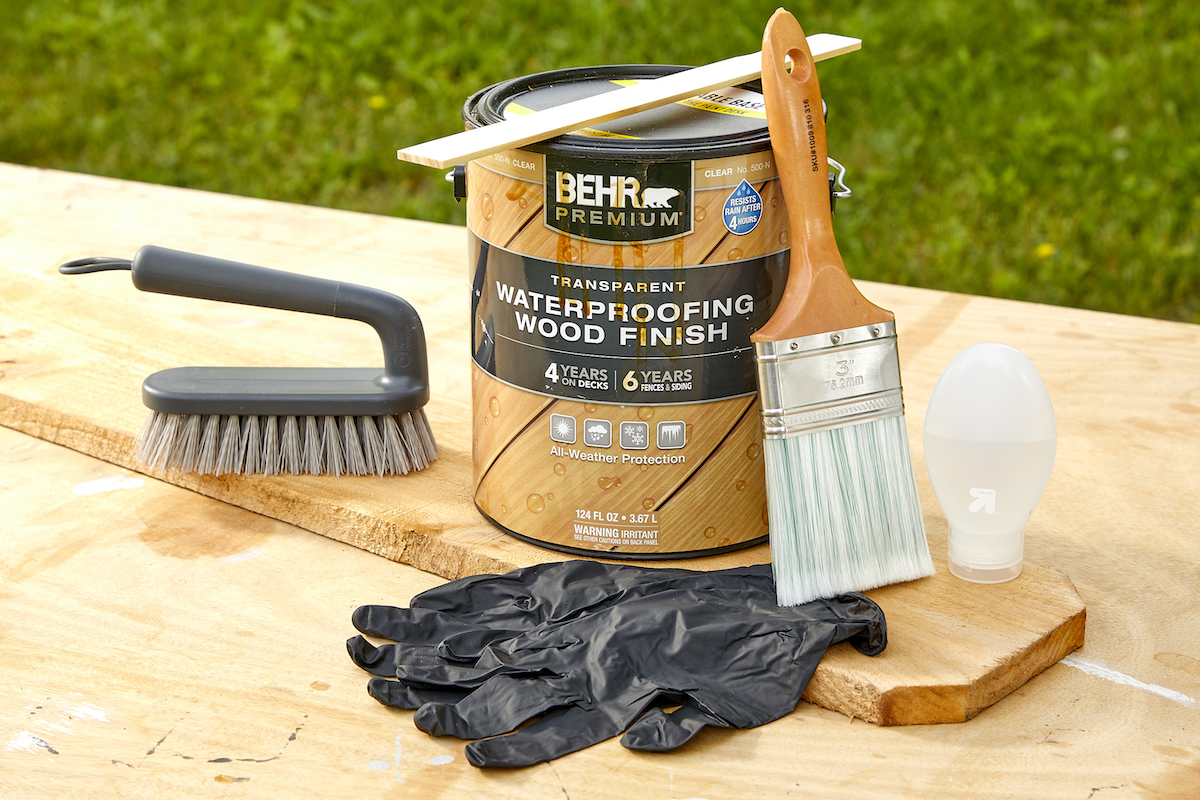We may earn revenue from the products available on this page and participate in affiliate programs. Learn More ›
Pressure treating protects wood from the elements, helps prevent insect attacks, and minimizes the effects of aging. While pressure-treated wood offers many benefits, structures built from it often leave something to be desired in appearance. But armed with a few simple techniques, you can stain the surfaces, giving them both a more beautiful look and additional long-lasting protection. Staining also helps protect the wood and prevents it from cracking and splitting when seasons change. With these effective steps, you can enhance your deck, fence, or other structure and enjoy it for many years to come.
How to Stain Pressure-Treated Wood
Stain pressure-treated wood as you would stain any wood. Select a stain, prepare the surface, ensure the wood is sufficiently dry, do a patch test, and then carefully apply your stain with a brush or a staining pad.
Tools & Materials
Bobvila.com may earn a commission from purchases made through these links.
Step 1: Select the stain.
Any exterior wood stain will work to stain pressure treated wood. While you will find oil-based stains and latex stains, most homeowners prefer using oil-based stains for pressure-treated wood. Oil-based stains completely soak into the wood, creating a barrier against water penetration.
Additionally, latex stains are more opaque, almost paint-like, and tend to hide the wood’s grain pattern, something DIYers are typically not looking for. While it is possible to paint pressure-treated wood, it offers a very different look and feel than stain.
Some manufacturers have formulated stains that are specifically designed for use on pressure-treated wood.
Step 2: Prepare the surface you plan to paint.
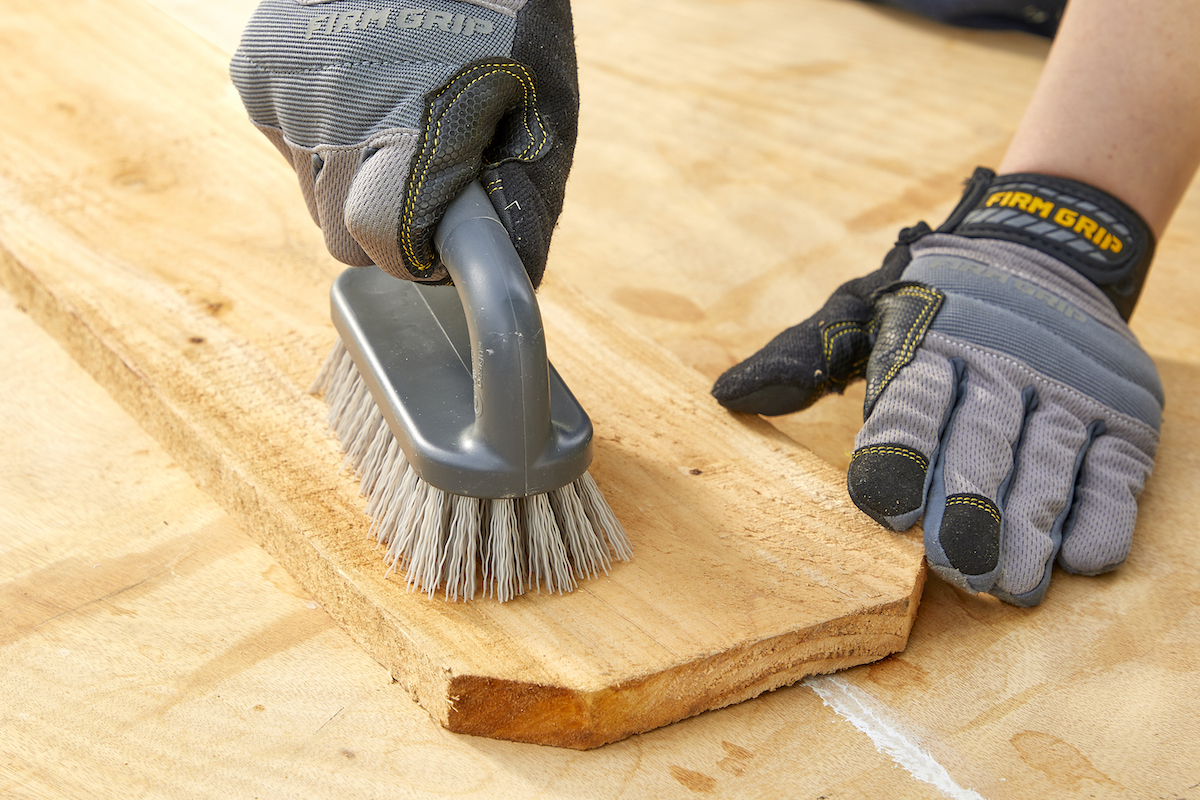
Before you stain pressure-treated wood, you should clean it first. The easiest way to wash new wood is to knock loose any dirt or residue using a pressure washer. If you’re dealing with older wood, however, you’ll need to take additional steps in order to remove stains and years’ worth of built-up grime. Stop by your local hardware store to pick up a specially developed wood cleaner for decks, fences, or other wood structures, and follow the product’s instructions for a thorough cleaning. (Need a recommendation? Our tested guide to the best deck cleaners contains our top picks.)
It’s important to wait until your pressure-treated wood is completely dry before applying stain, as the chemicals used to treat the wood often leave additional moisture behind. Drying times range anywhere from a few weeks to a few months, depending on such factors as weather and climate.
Step 3: Test the moisture level of the wood.
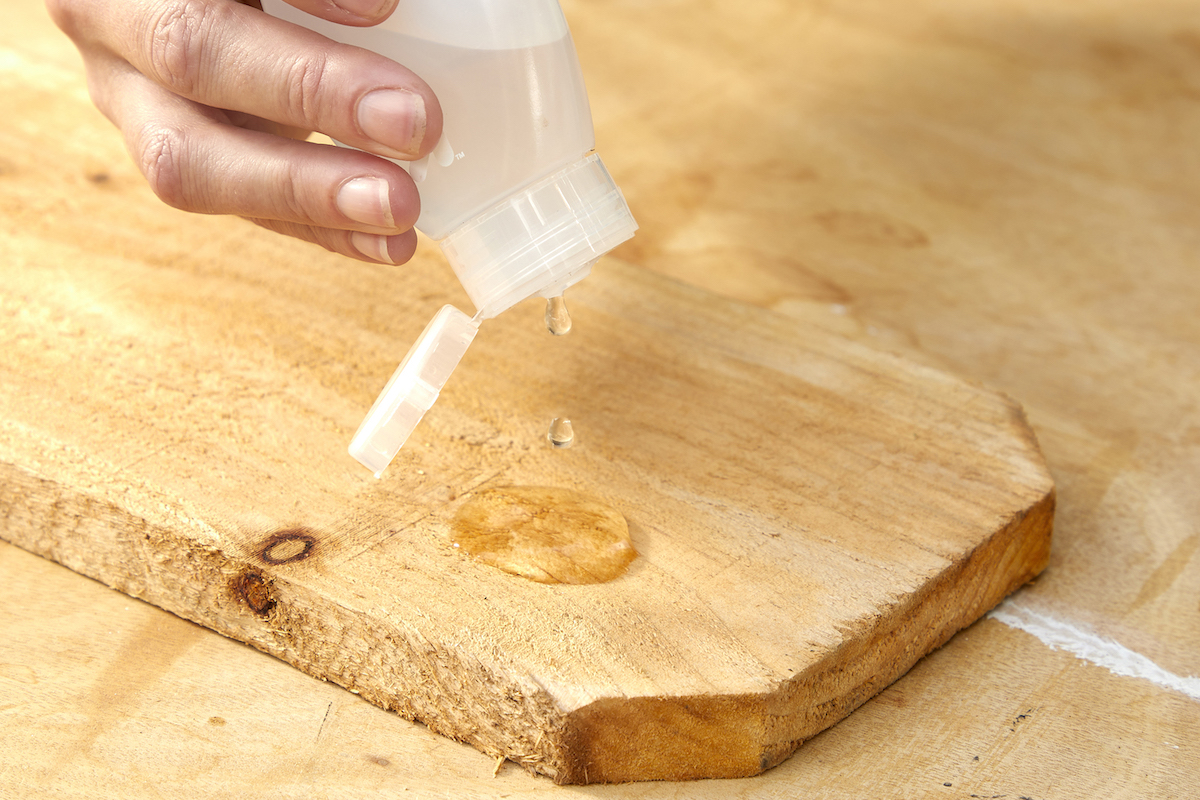
When you’re ready to proceed, there are a few effective ways for testing the level of moisture in the wood. The first is a bead test, which is performed by simply dripping small amounts of water on the wood; if the water beads, then the wood still retains some moisture. Alternatively, simply press a nail into the wood to test for wetness. If water seeps out around the nail while it’s being pressed into the wood, then more drying time is needed.
Step 4: Choose the right time for your project.
Check the weather forecast to make sure no rain is expected. Stain applications need about 24 to 48 hours of drying time, so you’ll need to be certain that the skies will remain precipitation-free during that time.
Step 5: Ready your chosen wood stain for application.
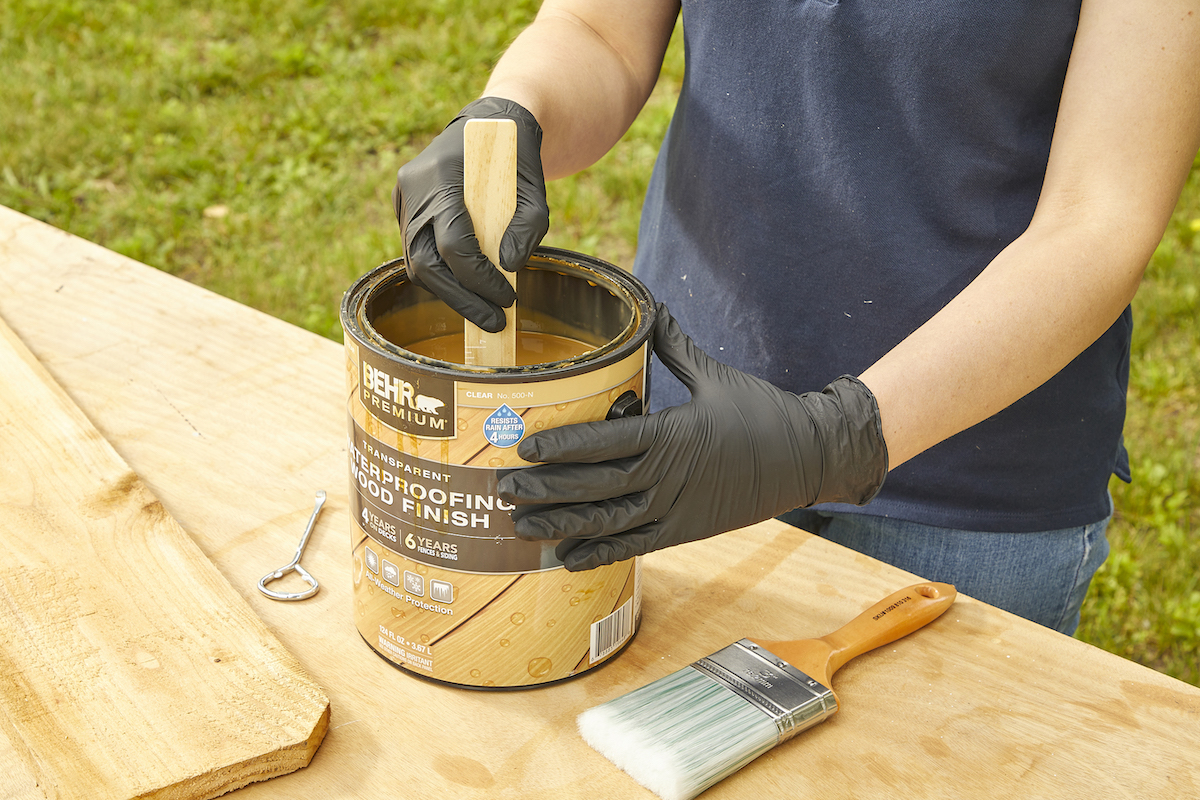
Next, thoroughly mix the stain. You can have the hardware store do so at the time of purchase, or you can just shake it well at home. Either way, continue to stir the stain frequently as you work to ensure the best application.
Step 6: Test the stain to make sure you like how it looks.
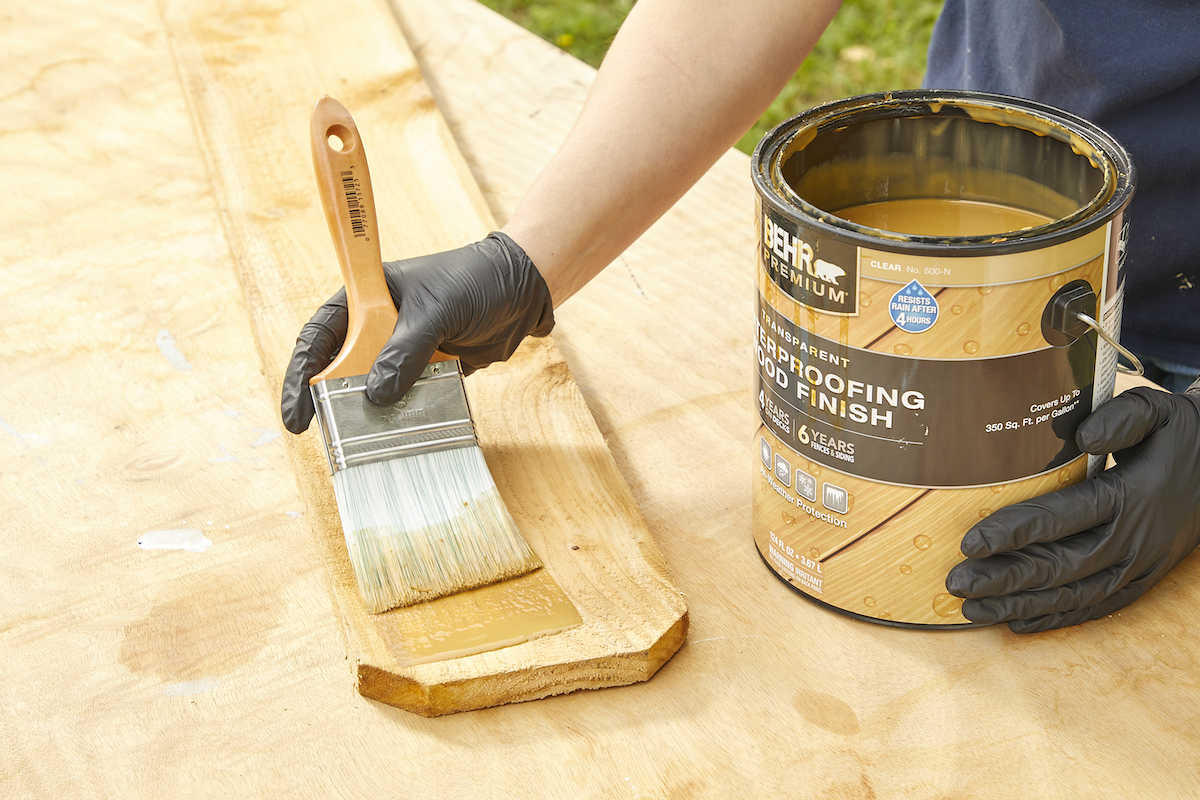
While it may be tempting to rush to finish the project completely, always test the stain in an inconspicuous spot. Select a small area and brush on the stain, allowing it to dry before proceeding to work on the entire structure. This test patch will help ensure that you’ll be happy with the completed project before you sink hours into it, and will also confirm that the stain will go on properly and without any issues, such as wetness.
Step 7: Apply at least one coat of stain.
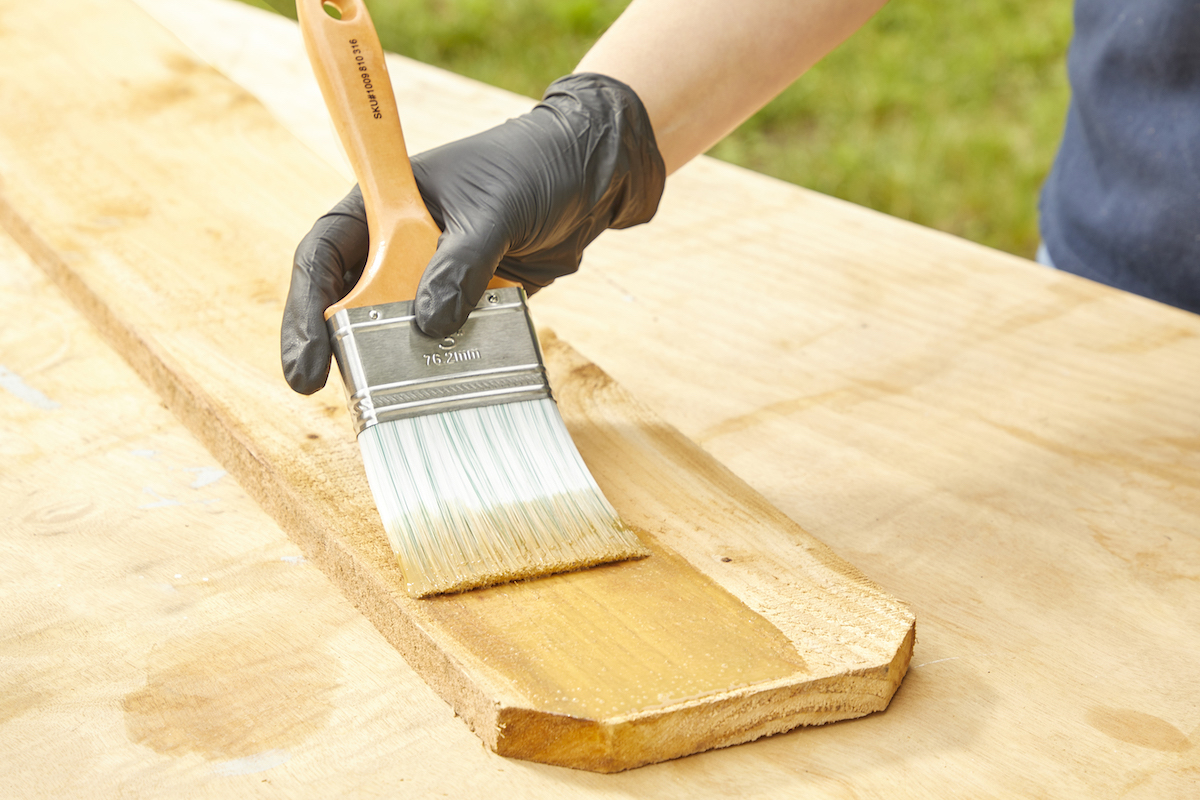
If all looks good, continue staining the rest of your pressure-treated wood. As you’re applying stain to pressure-treated wood, keep in mind that back brushstrokes constitute additional coats and may cause color variation. If you are staining a fence or other vertical surface, start at the top to ensure that you’ll cover any drips or runs as you work your way down. Remember that exposed ends of wood may need additional staining, due to greater absorption.
Tips for Staining Pressure-Treated Lumber
Pressure-Treated Wood Needs Protection
The chemicals injected into pressure-treated wood are intended to help prevent decay and attacks from insects, but pressure-treated lumber, on its own, is still susceptible to signs of aging.
Applying stain to pressure-treated wood offers an additional level of protection that homeowners don’t want to be without. Stain offers another layer of much-needed protection from insects and decay, as well as from mold and mildew. Additionally, unstained wood can crack and splinter; stain helps prevent that.
Furthermore, of course, and perhaps most significant, are the aesthetic benefits imparted by wood stain. An attractively colored deck adds enrichment and personality to the landscape. Stain enhances or maybe even improves wood’s natural beauty, bringing out pattern and texture.
Don’t Stain Fresh Pressure-Treated Wood Straight Away
You might be eager to complete your newly built deck, but if it’s built of pressure-treated wood, it’s important to wait until the wood has dried out before staining it.
In order for stain to be effective, it needs to penetrate the wood, and this can only occur if the wood is dry enough to absorb the stain. As most pressure-treated lumber acquired from home improvement stores is still quite wet from its recent treatment, homeowners are forced to wait for the wood to dry.
This wait can be anywhere from a few weeks or a few months, depending on climate conditions. How do you know if it’s ready? Conduct a “sprinkle test.” Sprinkle a bit of water on the wood. If the water is absorbed by the wood within 10 minutes, it’s time to stain! On the other hand, if the water beads or pools on the wood surface, the wood isn’t quite ready to be stained.
Final Thoughts
Staining a deck or fence made of pressure-treated wood not only adds additional protection against decay and damage, but it also beautifies the structure, allowing the homeowner to add personality and punch to the landscape. Just follow the steps outlined above, and you’ll be on your way to an even more beautiful backyard.
FAQs
Wait until the wood is completely dry. Depending on climate conditions, pressure-treated wood can take anywhere from a few weeks to a few months.
Yes, it’s ok to stain pressure-treated wood, but you’ll want to wait until the wood is completely dry.
If you stain pressure-treated wood too soon, the stain will be unable to fully penetrate the wood, and you will not get the protective benefits of the stain.
What is the best stain for pressure-treated wood?
An oil-based stain is the best for pressure-treated wood. Some manufacturers have created stains specially designed for staining treated wood.

